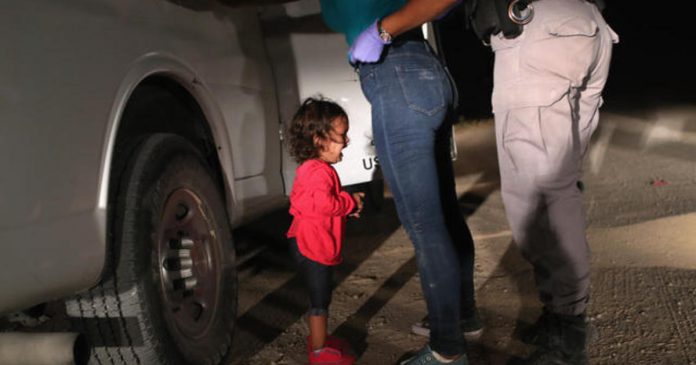[ad_1]
Officials tasked with carrying out the president’s executive order to temporarily stop migrant families from being separated still have questions about how to implement parts of the order. This was evident Wednesday evening, when conflicting guidance was given to reporters about whether the federal government would now reunite families that have already been separated.
Initially, Ken Wolfe, a spokesman for the Administration for Children and Families, a division of the Health and Human Services Department, told ‘ Weijia Jiang there would not be special efforts made to reunite children who have already been separated from their families as a result of the Trump administration’s “zero-tolerance” policy, despite Mr. Trump’s executive order temporarily ending the separations. He was speaking for the office that oversees the process to place children after they’re separated from their parents.
However, late Wednesday evening, the senior communications director for the same division, Brian Marriott issued a statement saying that Wolfe’s guidance was not correct.
“An ACF spokesperson misspoke earlier regarding the Executive Order signed today by the president,” Marriott said “It is still very early and we are awaiting further guidance on the matter.” He went on to say, “Reunification is always the ultimate goal” and the administration is “working towards that” for the unaccompanied children currently in HHS custody.
But according to a statement by the .S. Customs and Border Protection, border patrol says that children will not be reunited until after their parents are prosecuted.
“Family unity will be maintained for families apprehended crossing the border illegally, and they will be transferred together to U.S. Immigration and Customs Enforcement. The Border Patrol will continue to refer for prosecution adults who cross the border illegally. For those children still in Border Patrol custody, we are reuniting them with parents or legal guardians returned to Border Patrol custody following prosecution,” the statement reads.
The federal government has already separated more than 2,000 children from families who crossed the southern border, and placed them in government facilities. But not all have remained near the border. According to New York Mayor Bill de Blasio, 350 children have been sent to a shelter in New York in the last two months.
On a conference call with reporters Wednesday, senior Justice Department official Gene Hamilton wasn’t clear on how the implementation of the executive order would play out.
“There will be implementation phase that follows — certainly the Department of Homeland Security and the Department of Health and Human Services will be working and collaborating closely on the best way to implement this EO,” he said. “I can’t speak for their equities on this call. I’m not an operator and I can’t pretend to tell precisely what they are going to do.”
He did not answer a question about what happens to children currently separated from their parents.
“I’m going to have to defer to DHS and HHS as to the specific answers to that question,” he said.
Once children are separated from their families at the border, they are placed into the “unaccompanied alien children”(UAC) program — even if they arrived with an adult, Jiang reports. For minors in the UAC program, the sponsorship process — finding family members or other potential sponsors — will proceed as usual, Wolfe told Jiang. It’s not yet clear whether Marriott was also saying that this guidance was also not correct.
Facing immense pressure to change the family separation policy, Mr. Trump on Wednesday surprised Capitol Hill with his announcement that he would sign an executive order amending the policy. But, as ‘ Paula Reid has reported, based on a source familiar with the matter, the executive order Mr, Trump declared would “solve” the problem of separation while parents are prosecuted for illegally crossing the border is really only good for 20 days. The order does not override the 1993 Flores v. Reno Supreme Court case, which says that detained migrant children cannot be held in government detention facilities for more than 20 days.
Essentially, this means that after the 20-day mark, children may still be separated from their parents.
“Right now, we have the lawful authority to detain family together for up to 20 days,” Hamilton said. “What we are seeking is a modification of that so we can detain beyond 20 days, the entire family unit together. And I’m sure you can appreciate most of these cases involving someone who is seeking relief or protection from removal take longer than 20 days to adjudicate … and so it’s critically important that Judge Gee act and allow these cases to continue to be adjudicated while the families stay detained in a safe setting together.”
The Department of Homeland Security did not immediately respond to request for comment on the matter of reuniting children and families.
‘ Kathryn Watson, Jacqueline Alemany and Paula Reid contributed to this report.
[ad_2]




